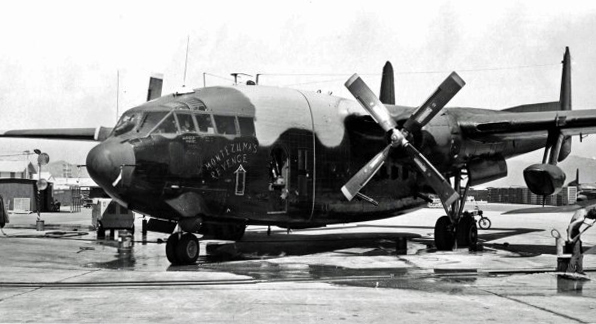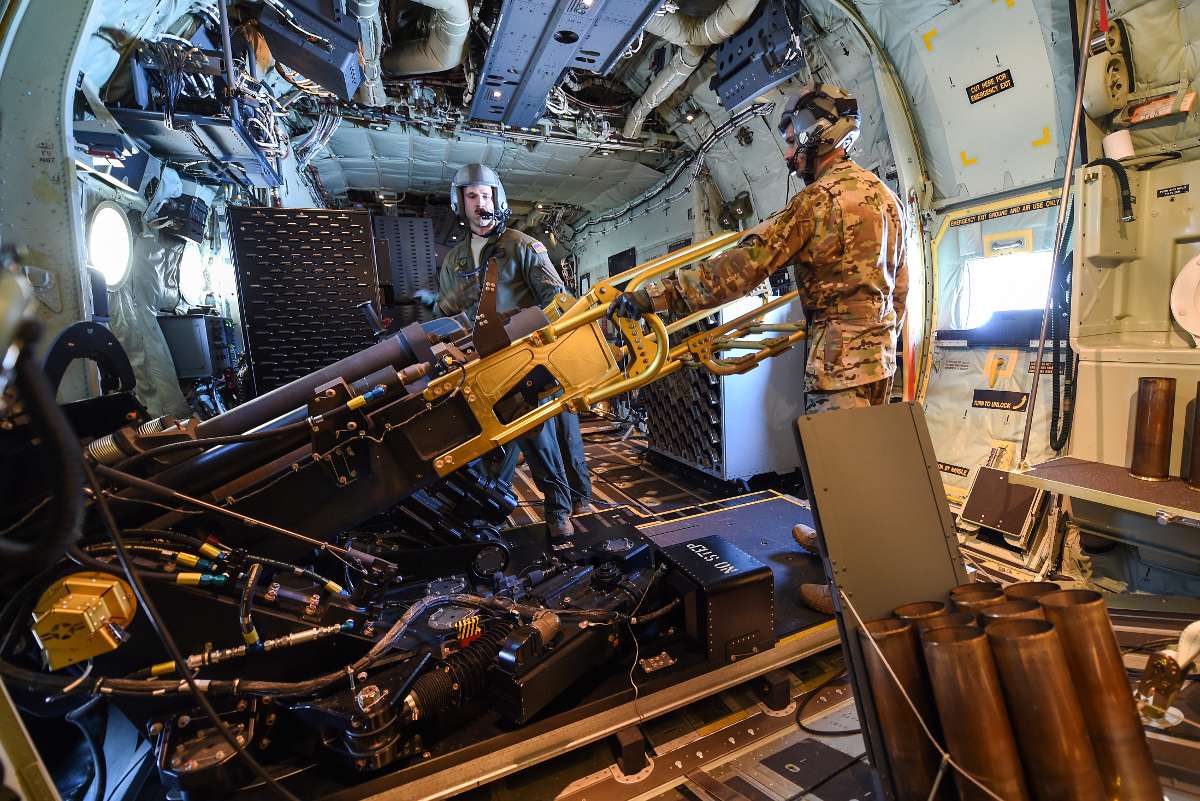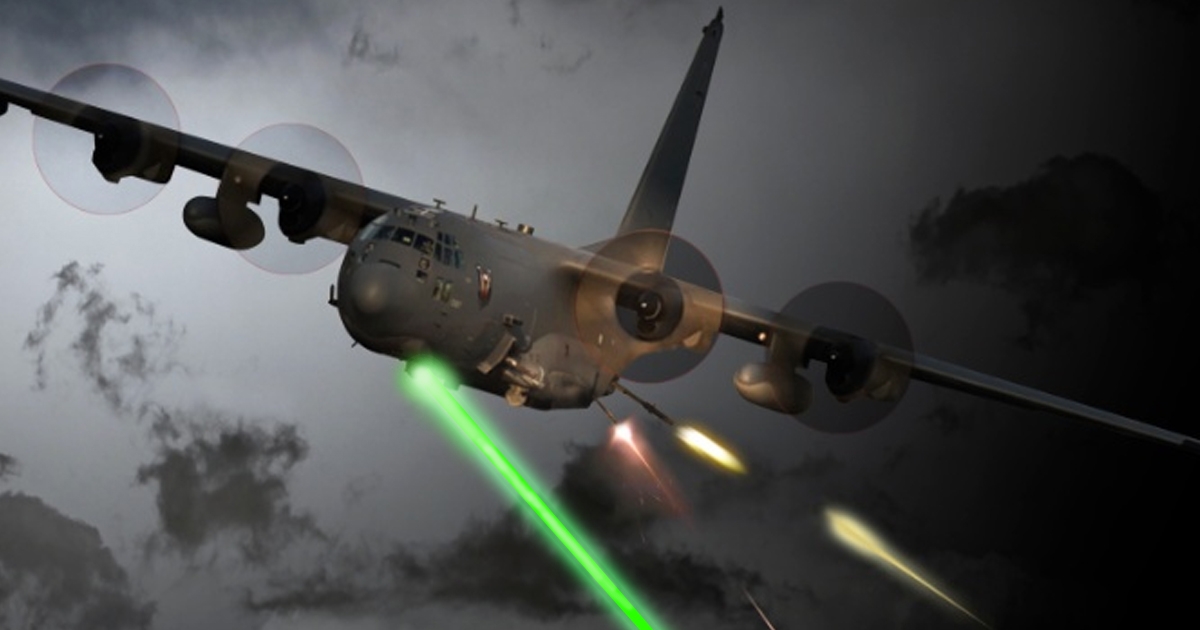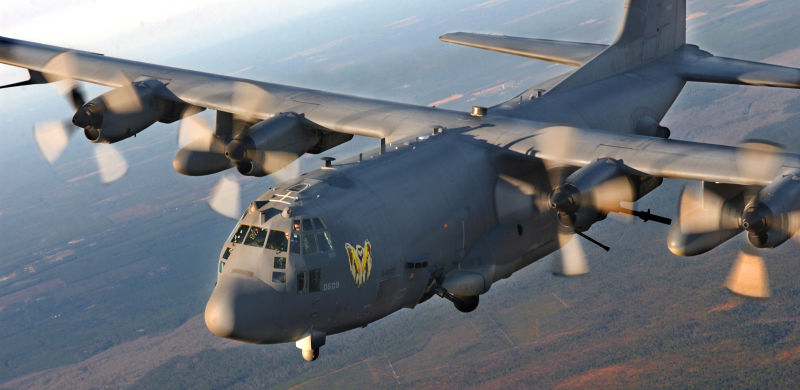The AC-130 Spectre Gunship Still Plays a Critical Role in America’s Close Air Support Capability.
It is large, slow and vulnerable to air defense systems including increasingly effective man-portable SAMs. It can also deliver withering fire support with an impressive degree of accuracy and an ever-expanding variety of munitions if the battlespace is permissive enough. It’s the AC-130 Spectre gunship.
But is the large, slow gunship still relevant?
With the role of the A-10 in question, the emergence of the F-35 Joint Strike Fighter, the recent Light Attack Experiment and even armed, remotely piloted aircraft (RPAs) the question becomes: where does the AC-130 Spectre gunship fit into the mix of assets in the Air Force order of battle?
The term “gunship” entered the air combat vocabulary mostly during the Vietnam war with Project Tailchaser, the experimental test of a minigun-equipped twin-engine Convair C-131B turboprop cargo plane carrying a single GAU-2/A minigun. The GAU-2A minigun is a belt-fed, multi-barrel Gatling gun that can sustain a very high rate of fire without overheating its multiple gun barrels.
Interestingly, the development of the gunship concept in the early 1960s could be considered roughly analogous to today’s modern Light Attack Experiment. Gunship development in the early days of the Vietnam conflict used entirely off-the-shelf equipment and aircraft. Gunships were developed to fill a need resulting from asymmetrical guerilla warfare fought by a largely insurgent adversary. Both of these attributes are present in the Light Attack Experiment.
The Project Tailchaser experiment led to the famous AC-47 gunships used in Vietnam. These are largely regarded as the first modern “gunships”.
Using the call sign “Puff” for Puff the Magic Dragon, the AC-47 was used in combat for the first time on Dec. 15, 1964. Because of its success, the AC-47 was soon joined over Vietnam by the AC-119G Shadow and AC-119K Stinger gunships. The AC-119K Stinger has the distinction of being the only combined turboprop and jet powered gunship with the addition of a pair of underwing-mounted General Electric J-85 jet engines. Following the success of these gunship platforms the AC-130A Project Gunship II was developed in 1967 at Wright-Patterson AFB in Ohio and deployed to Vietnam soon after.

Prior to the Vietnam conflict there had been several experiments with aircraft modified to carry multiple guns for both air-to-ground and air-to-air targets. These included versions of the B-25 Mitchell with up to eight cannons mounted in a solid nose for ground attack and an experimental B-17 Flying Fortress converted to an air-to-air gunship called the YB-40. The YB-40 gunship actually flew 48 operational missions over Germany in WWII. It was armed with 18 Browning M2 .50 caliber machine guns for protection of bomber formations from fighter attack. The YB-40 could accompany the bomber formation during the entire mission when fuel restrictions meant single engine fighter planes such as the P-51 Mustang and P-47 Thunderbolt could not escort the bombers for the entire mission.
An indication that gunships have maintained their relevance even in the modern tactical airspace alongside RPAs, A-10 Thunderbolt II jets and the F-35 joint strike fighter is the use of the gunship in private militaries. Author Robert Pelton chronicled an apparently successful experiment by private military contracting pioneer Erik Prince, founder of Blackwater, Inc. (renamed “Xe” in 2009 and now known as “Academi”). According to Young’s account, Prince used the CASA 212 twin-engine turboprop with two A12 .50 caliber machine guns capable of 4,200 rounds per minute sustained rate of fire. Young wrote, “Seventy bullets per second creates a steady stream of red tracer fire that with depleted uranium shells can easily turn armored vehicles into Swiss cheese.” Prince has gone on to propose additional private military gunship assets to prospective clients with no news about any takers on his proposals.
The vulnerability of the gunship was underscored in the early morning of Jan. 31, 1991 over Khafji, Iraq during Operation Desert Storm: an AC-130H Spectre gunship from the 16th Special Operations Squadron, callsign “Spirit 03”, was supporting U.S. Marines during the Battle of Khafji. The Marines had called for an air strike on an Iraqi “missile battery”. There were three AC-130H Spectre gunships on station that night in support of the U.S. Marine operation in Khafji. But as sunrise approached the AC-130H gunships would become increasingly vulnerable to visual acquisition from ground gunners and missile crews as twilight appeared. As sunlight became visible over the horizon the AC-130H successfully struck the targets designated by the U.S. Marines. But minutes later an Iraqi SA-7 “Grail” man-portable surface-to-air missile hit the last remaining AC-130H, “Spirit 03”. Although the aircraft survived the initial hit from the SA-7 and managed to fly out over water, the plane and its entire 14-man crew were lost. The incident underscored the vulnerability of the large, relatively low altitude, slow-moving gunship to modern man-portable anti-aircraft weapons.
Gunship operations continued in the most recent years of the Global War on Terror, but one of their latest operational uses underscored the need for enhanced ground intelligence and gunship integration. On Oct. 3, 2015, an AC-130U gunship launched a precision air strike on a target in Kunduz, Afghanistan at the Kunduz Trauma Center. The target was thought to be harboring Taliban militants. During the 30-minute airstrike the international aid organization Médecins Sans Frontières said that, “at least 42 people were killed and over 30 were injured”. The organization claimed that many of the casualties were non-combatants. While the incident was disastrous from a political and humanitarian perspective, it underscored the lethal effectiveness of the AC-130 gunship platform.
There are very few details about the gunship operations in Iraq. Among the things that we know is that two AC-130s along with some A-10 Warthogs were involved in a quite famous airstrike during which 116 ISIS-controlled fuel trucks were destroyed near Abu Kamal, Syria, on Nov. 15, 2015 as part of the coalition’s Operation Tidal Wave II.
Today the gunship legacy continues with the September 2017 delivery of the first six AC-130J Ghostrider gunships, the latest and most advanced version of the AC-130. The new AC-130J is a massive upgrade over previous versions: according to Air Force Times writer Stephen Losey, “The most heavily-armed gunship in history, bristling with 30mm and 105mm cannons, AGM-176A Griffin missiles, and the ability to carry Hellfire missiles and GBU-39 Small Diameter Bombs.”
Stephen Losey also reports in an October 2016 article in the “Air Force Times” that the performance of the new AC-130J Ghostrider is greatly enhanced over previous AC-130 versions. “It’s lighter, faster and more efficient.” Losey quoted USAF Maj. Jarrod Beers, a weapons system officer on the new AC-130J. According to Losey, Maj. Beers told him, “[It] burns 25 to 30 percent less gas than legacy aircraft. It flies at a top speed of about 362 knots, or 416 miles per hour – well above the roughly 300 mph top speed of the AC-130U. The AC-130J can fly a maximum range of 3,000 miles and up to 28,000 feet in the air – about twice as far, and roughly 3,000 feet higher than the AC-130U.”

There is even discussion of installing a laser weapon on the AC-130U. An April 2017 report in “National Defense” by reporter Yasmin Tadjdeh said that the Air Force is going to test “streamlined electrical lasers” as opposed to heavy chemical lasers for use onboard the AC-130U. The primary challenges remaining are insulation from airframe vibration and turbulence to maintain a suitably focused beam. But when you consider advances in commercial optical stabilization in everything from GoPro camera mounts to long telephoto lenses on still and video cameras, this problem will be rapidly solved for laser weapon use onboard the AC-130U. In testing, the laser weapon would replace the current location of the 30mm gun and add the installation of a special clear optical “window” the laser could shoot through to eliminate movement of the weapon from the boundary layer of air entering the fuselage.

Although there is no current (unclassified) plan to install a laser weapon operationally on the AC-130U Ghostrider, that is subject to change pending the outcome of the weapon evaluation. But one thing that is absolutely guaranteed, especially according to AC-130 gunship crews we spoke to at the Aviation Nation Air & Space Expo 2017 at Nellis AFB, Nevada. The heavy gunship is not going away anytime soon, even with the integration of new strike assets like the F-35 Joint Strike Fighter, remotely piloted aircraft and evaluation programs like the Light Attack Experiment. The heavy gunship will remain relevant, increasingly lethal but significantly less vulnerable for many years to come.









